A single chocolate chip cookie recipe has drawn over 11 million page views since 2013. People really want to learn how to make chocolate chip cookies – it remains one of the most popular kitchen skills.
The perfect balance of chewy centers and crispy edges doesn’t happen by chance. Professional bakers have found that certain techniques make ordinary cookies extraordinary. They chill the dough for at least an hour and use bread flour instead of all-purpose flour.
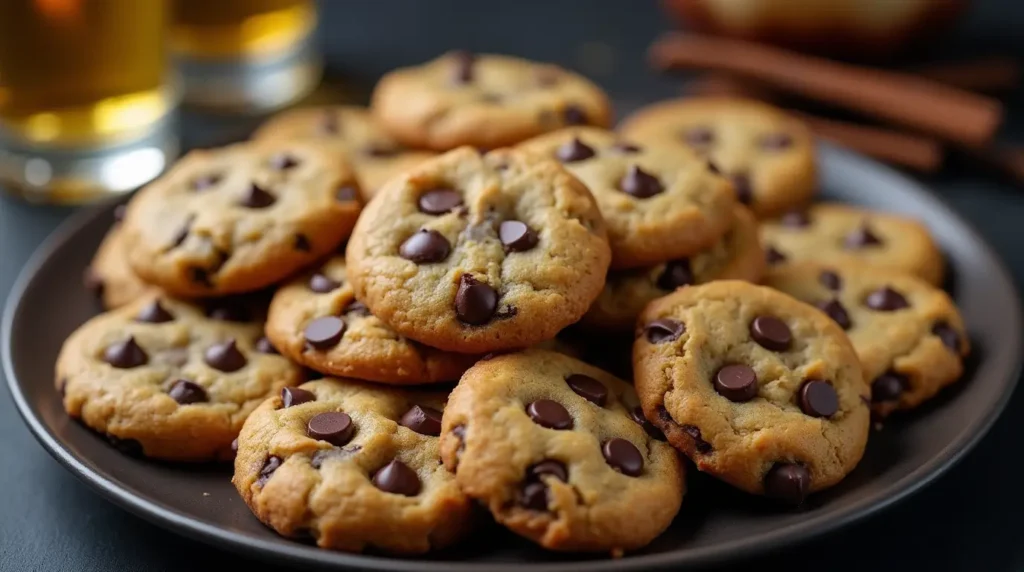
Our grandmother’s time-tested recipe comes backed by more than 14,000 community reviews. You’ll get exactly what you’re craving – soft chocolate chip cookies with gooey centers or perfectly chewy ones that stay fresh for days.
Want to find the secrets behind the perfect batch? Let’s take a closer look at everything you need to know to raise your cookie game!
Table of Contents
Essential Ingredients for Perfect Cookies
The secret to perfect chocolate chip cookies lies in understanding how key ingredients work together. We used three main components to determine our cookie’s texture and taste: flour, chocolate, and sugar.
All-Purpose Flour vs Bread Flour
Your cookie’s texture depends heavily on the protein content in flour. All-purpose flour contains about 10-12% protein and works well for most baking needs. On top of that, bread flour’s higher 12.7% protein content builds stronger gluten development.
Cookies made with bread flour turn out chewier with a denser texture. Bread flour soaks up more liquid than all-purpose flour, so you’ll need to add 1-2 teaspoons of extra liquid for each cup of flour. Both types of flour give great results, though bread flour creates cookies that are more “bendy” with less tenderness.
Choosing the Right Chocolate
Cookies taste best with chocolate containing 60% to 70% cacao. Different chocolate types create unique flavors:
- Dark chocolate (60-80% cacao): Delivers a balanced, traditional cookie taste
- Milk chocolate (35-45% cacao): Makes sweeter cookies
- White chocolate: Brings extreme sweetness that pairs well with nuts or spices
Chopped chocolate bars perform better than chips because they pack more cocoa butter and melt smoothly. Most chocolate chips contain stabilizers to keep their shape while baking. Chopped chocolate creates beautiful melted puddles throughout your cookies.
The Role of Different Sugars
Sugar transforms your cookies beyond just sweetness. It shapes their texture, spread, and color. White granulated sugar creates crispy edges and helps cookies spread. Brown sugar contains molasses that makes cookies chewy and moist.
Dark brown sugar packs twice the molasses of light brown sugar. This creates a deeper butterscotch flavor and better rise as it reacts with baking soda. The best results come from mixing both sugars – white sugar brings spread and crispiness, while brown sugar adds moisture and chewiness.
Grandma’s Secret Mixing Method
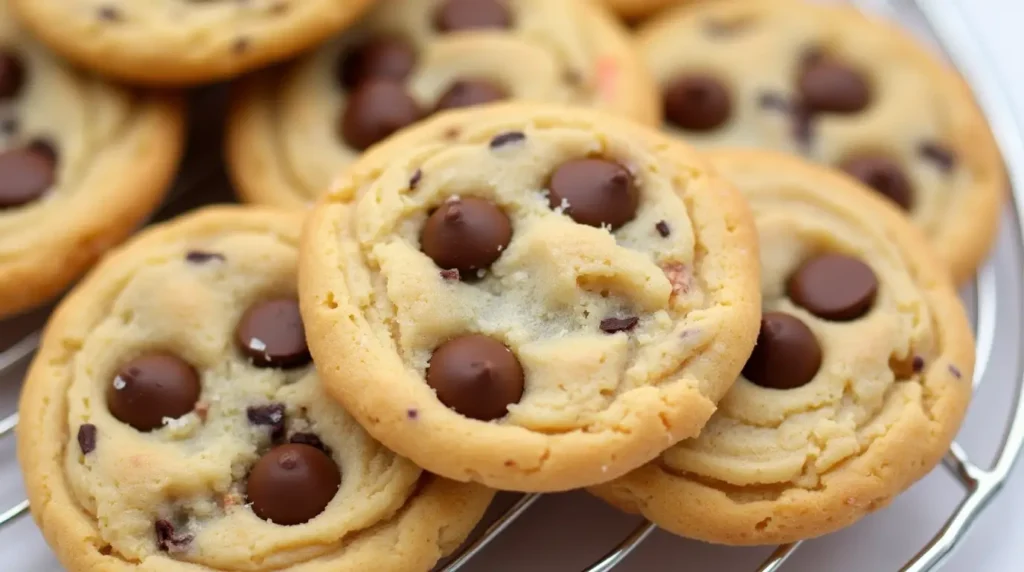
Perfect chocolate chip cookies depend on two vital elements: the right ingredient temperature and mixing technique. These are the foundations of getting cookies that turn out chewy instead of dense.
Room Temperature Ingredients
You need to be precise with ingredient temperatures. Your butter should be at 68°F to avoid cookies that spread too much or become dense. Butter that’s too warm will feel greasy and your finger will sink right through it.
Need to warm up eggs quickly? Put them in warm water for 3 minutes. Your dairy ingredients should be at the same temperature to create a proper emulsion. Taking ingredients out an hour before baking usually does the trick, especially in moderate climates.
Proper Creaming Technique
The creaming process is the foundation of perfect chocolate chip cookies. Here’s the quickest way to cream properly:
- Start with butter at 60-65°F for summer baking
- Beat butter and sugar at medium speed for 2-3 minutes
- Keep mixing until the mixture gets lighter in color
- Add room temperature eggs one at a time
- Mix just until ingredients combine after adding flour
Good creaming creates tiny air pockets as sugar crystals cut through the butter. This will give a better volume and even baking. A stand mixer with a paddle attachment works best at medium-high speed.
There’s another reason to be careful – over-creaming the mixture. Your butter-sugar mix should be light and fluffy but slightly grainy between your fingers. Over-creaming makes cookies spread too much or collapse during baking.
Note that different mixers have their own speed settings – “medium” on one mixer might be “high” on another. Watch for visual cues instead of timing. The mixture should be pale yellow with fluffy peaks, suggesting it’s ready for the next step.
Mastering Cookie Texture
The perfect cookie texture depends on three key elements: proper dough temperature, consistent shaping, and precise baking time. These elements will determine if your chocolate chip cookies come out chewy, soft, or crispy.
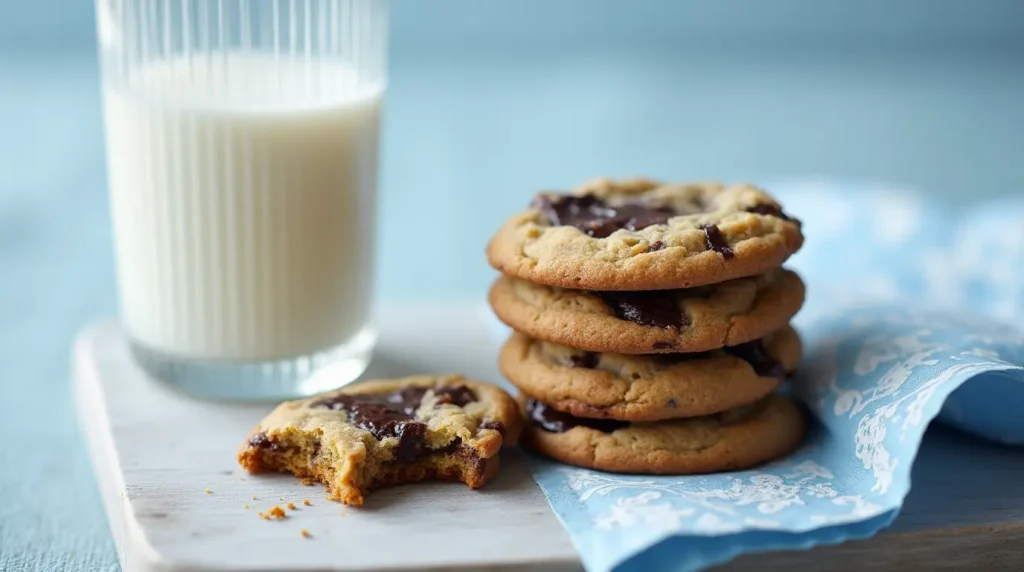
Chilling the Dough
A 30-minute refrigeration makes a big difference in your cookie’s taste and texture. In fact, chilling helps solidify the fat, which controls how much cookies spread during baking. The best results come from refrigerating the dough between 24 to 72 hours. This longer chilling time lets flavors develop fully, as with marinating meat.
Note that chilled dough gives you cookies with:
- Darker color and more pronounced flavor
- Thicker, chewier texture
- Better structural integrity
Shaping for Even Baking
Your cookies will bake uniformly when they’re the same size. Here’s how to shape them perfectly:
- Roll dough into uniform balls
- Place on parchment-lined baking sheet
- Space cookies evenly to allow for spreading
- Chill shaped dough for 10 minutes before baking
The cut cookies should go in the freezer for 10 minutes before baking, especially when you have intricate shapes or cutouts. This method helps keep defined edges and stops excessive spreading.
Signs of Perfect Doneness
You’ll need to watch for several visual cues to know when your chocolate chip cookies are perfectly baked. Here’s what to look for:
Light golden brown edges should contrast with a slightly pale center. The surface shine matters too – cookies are ready when they lose their glossy look. Don’t worry if the center seems slightly underbaked, since cookies continue to bake for up to 20 minutes after you take them out.
A thermometer reading between 175°F and 185°F (79-85°C) will give a precise result. This method works well whatever your oven variations or environmental conditions might be.
Softer cookies need a temperature of 325-350°F. The edges get crispier at 375-400°F. Your cookies should feel set but not hard to touch, and they’ll firm up as they cool.
Common Baking Mistakes to Avoid
Even experienced bakers make mistakes that can turn perfect chocolate chip cookies into disappointing treats. Understanding these common pitfalls will give a way to prevent baking mishaps and consistent results.
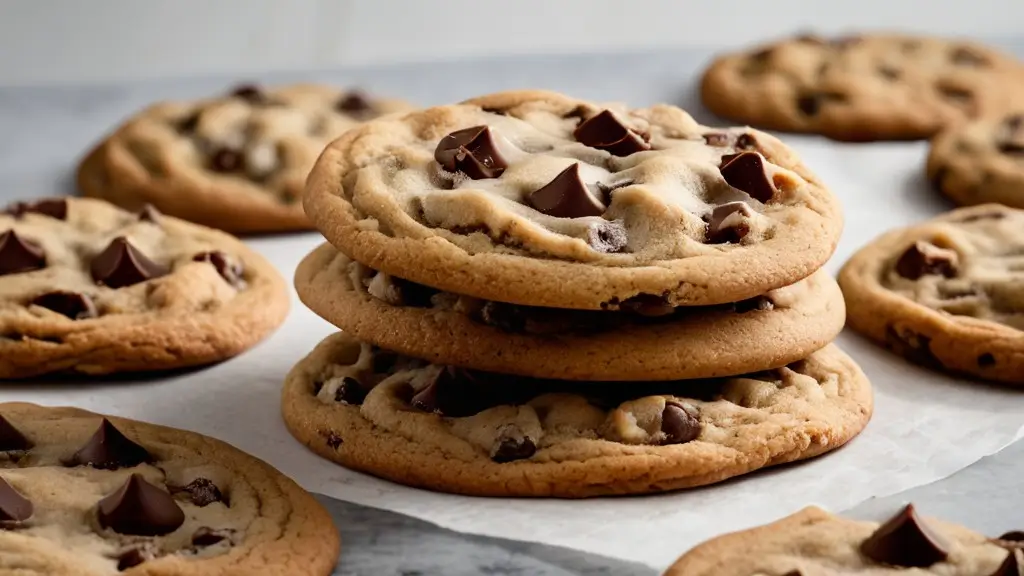
Measuring Flour Incorrectly
Flour measurement is the most common baking error. We measured wrong techniques that can add up to 30 extra grams of flour per cup. Too much flour will change soft, chewy cookies into dry, dense disappointments.
The proper flour measuring technique involves three steps:
- Fluff the flour with a spoon to aerate
- Spoon the flour gently into the measuring cup
- Level off with a straight edge without packing
Direct scooping of flour from the bag creates problems without doubt. This method can pack in 25-30% more flour than intended and leads to cakey, dry cookies. A kitchen scale provides the most accurate measurements, but the spoon-and-level method works well to get consistent results.
Overbaking the Cookies
Perfect texture depends on timing as a vital factor. Most chocolate chip cookies reach optimal doneness between 175°F and 185°F internal temperature. Visual cues help determine the right moment to remove cookies from the oven.
Watch for these signs of doneness:
- Edges turn light golden brown
- Centers appear slightly pale
- Surface loses its glossy appearance
- Cookies feel set but not hard when touched
Note that cookies continue baking for up to 20 minutes after removal from the oven. Setting a timer for 2-3 minutes less than the recipe suggests ended up preventing overbaking. Oven temperature accuracy matters – gages can be off by 25 to 50 degrees. An oven thermometer is a great way to get consistent results.
The middle rack position works best for cookies. Baking in the bottom third of the oven darkens bottoms too much, while the top third browns the tops excessively. Baking one sheet at a time will give even heat distribution and consistent results.
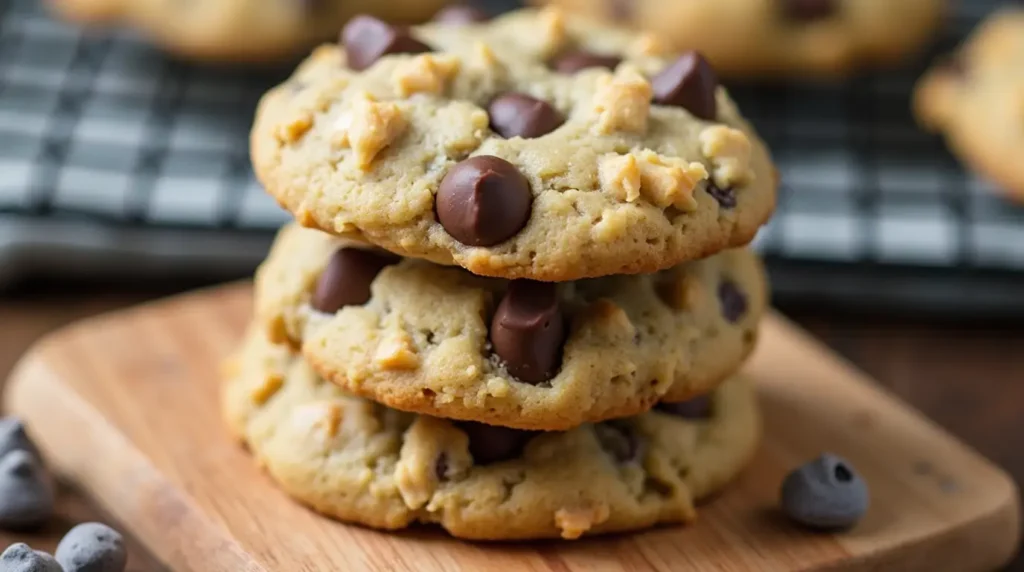
Storage and Freshness Tips
Storage techniques can make all the difference between cookies that stay fresh for days and those that go stale quickly. Let’s look at proven methods to keep your chocolate chip cookies tasting like they just came out of the oven.
Keeping Cookies Soft
Creating the right environment is essential to maintain softness. Your cookies will stay fresh at room temperature for three to five days. You should store them right after they cool completely to stop condensation from forming.
A slice of fresh white bread in your storage container works wonders. The bread creates humidity that lets cookies absorb moisture and stay soft. Room temperature storage with good moisture control works better than refrigeration, which tends to dry out cookies.
Freezing Cookie Dough
You can keep your chocolate chip cookies fresh for up to three months by freezing them. The quickest way to freeze them is:
- Shape dough into individual portions
- Freeze on a parchment-lined sheet until solid
- Transfer to freezer bags or containers
- Label with date and baking instructions
Cookie dough can take different forms in the freezer. To name just one example, you should wrap slice-and-bake dough in wax paper and put it inside a paper towel roll to keep its cylinder shape. Frozen cookie dough lets you enjoy fresh-baked cookies whenever cravings hit.
Best Storage Containers
The right storage container can substantially affect how fresh your cookies stay. Containers with airtight seals are crucial to prevent staleness. Look for flat-bottomed, rectangular or square-shaped containers, and use wax paper between cookie layers.
Decorated cookies need single-layer storage to protect their look. Different cookie varieties should stay separate to avoid mixing flavors and changing textures. Freezer-specific plastic containers are great at preventing freezer burn.
Note that you should check stored cookies often. A brown sugar saver, soaked in water first, helps maintain moisture in storage containers. To reheat stored cookies, wrap them in a damp paper towel and microwave for 15 seconds, or warm them in a 300°F oven for 5-10 minutes.
Conclusion
Perfect chocolate chip cookies just need attention to detail and proper technique. Our grandmother’s time-tested recipe taught us that quality ingredients, right temperatures, and essential mixing methods lead to success.

Small details make the biggest differences – from measuring flour correctly to getting the dough temperature right. These simple steps turn ordinary cookies into treats your family will love.
Your success in baking relies on proven techniques while avoiding common mistakes. The right storage methods keep your cookies fresh and delicious. Each batch brings you closer to perfecting this beloved recipe.
Want to grow your baking skills? Check out recipesnutritious.com for more recipes and food ideas that help create memorable treats for any occasion.
The real joy of perfect chocolate chip cookies comes when you share them. Start baking today and your cookies will become the highlight of every gathering.
FAQs
Q1. What’s the key to achieving the perfect chocolate chip cookie texture? The perfect texture comes from a combination of factors: using the right flour (all-purpose or bread flour), properly creaming room temperature butter with sugar, chilling the dough, and baking at the correct temperature. Chilling the dough for 24-72 hours intensifies flavors and improves texture.
Q2. How can I prevent my cookies from spreading too much during baking? To prevent excessive spreading, make sure your butter isn’t too warm when creaming with sugar. Chill the dough for at least 30 minutes before baking, and consider using bread flour for a chewier texture. Also, avoid greasing the baking sheet and use parchment paper instead.
Q3. What type of chocolate works best for chocolate chip cookies? The best chocolate for cookies contains 60-70% cacao. Chopped chocolate bars work better than chips because they melt more easily, creating desirable puddles throughout the cookie. Dark chocolate offers a balanced taste, while milk chocolate produces sweeter cookies.
Q4. How do I know when my chocolate chip cookies are perfectly baked? Look for light golden brown edges with slightly pale centers. The cookies should lose their glossy appearance and feel set but not hard when gently touched. For precise results, the internal temperature should be between 175°F and 185°F. Remember, cookies continue baking for up to 20 minutes after removal from the oven.
Q5. What’s the best way to store chocolate chip cookies to keep them fresh? Store cooled cookies in an airtight container at room temperature for 3-5 days. To maintain softness, place a slice of fresh white bread in the container. For longer storage, freeze shaped cookie dough for up to three months. Avoid refrigerating baked cookies as it can dry them out.

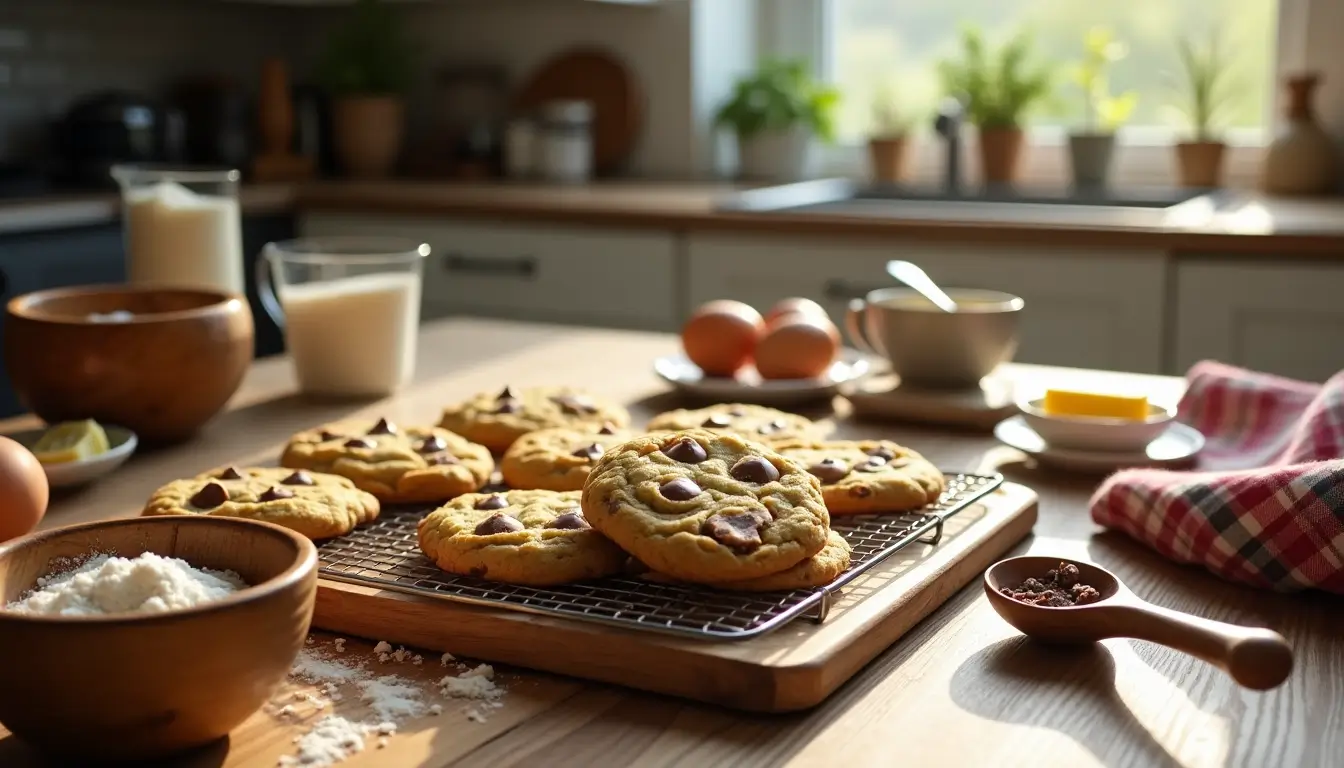
2 thoughts on “How to Make Perfect Chocolate Chip Cookies: Grandma’s Secret Recipe Revealed”
Comments are closed.